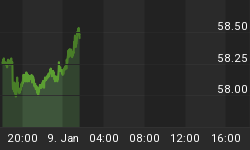As we enter the second week of June, the models of George Lindsay are pointing to the possibility of an end to the bull market which began in March 2009.
The 15 year interval, counted from the low in October 1997, defines the period between October 2012 (15 years) and September 2013 (15 years, 11 months) as the time frame in which to begin the search.
Lindsay's Principle of Alternation guides us to expect either a subnormal basic advance (414 - 615 days) or a short basic advance (630 -718 days) from the low of the basic cycle on October 4, 2011 because the previous advance into the February 18, 2011 high was a long basic advance (742 -830 days). These two time spans, subnormal and short, highlight the period between last November (414 days) and the end of September, 2013 (718 days).
Using Lindsay's Counts from the Middle Section model, we find two forecasts for a high during the third week of June; 6/16/13 (Figure 1) and 6/21/13 (Figure 2).

Figure 1

Figure 2
Unfortunately, the 15 day period that separates a subnormal and short basic advance occurs between June 10 and June 25 -the second and THIRD weeks of June! At this point we need to remain on alert; however, as it's quite possible we see an intra-day high near one of, or between the two, Middle Section forecasts and a closing high after June 25 - or vice versa.
Request your free copy of the latest Lindsay report at Seattle Technical Advisors.com
















